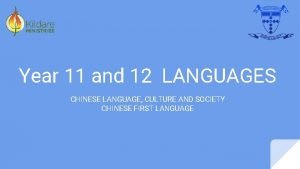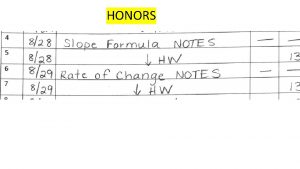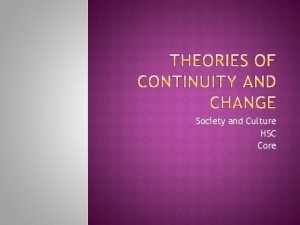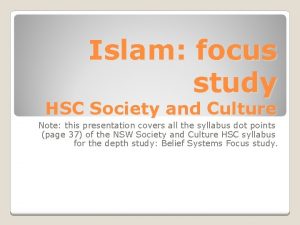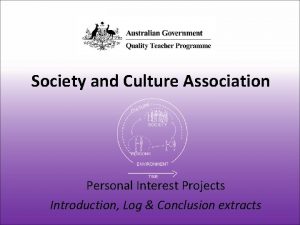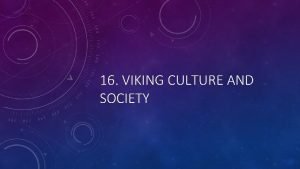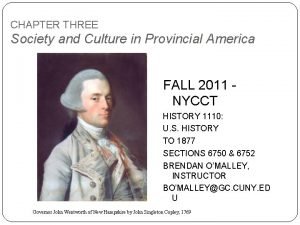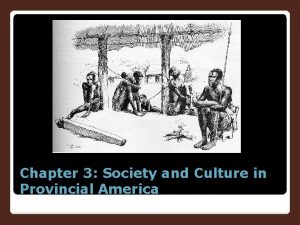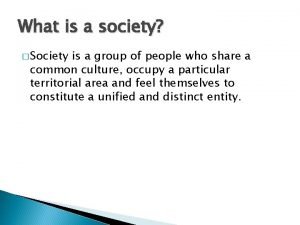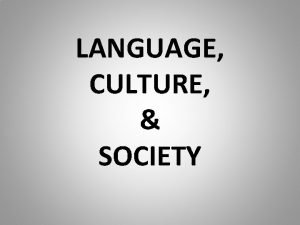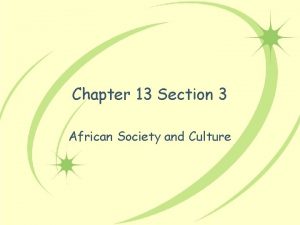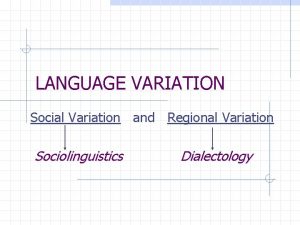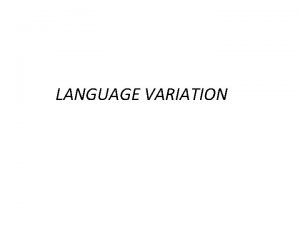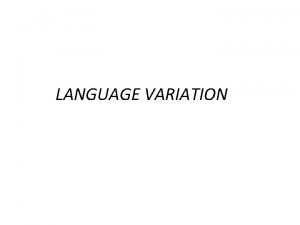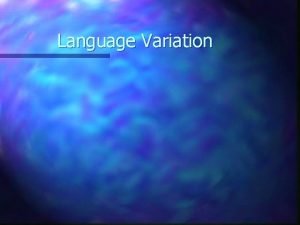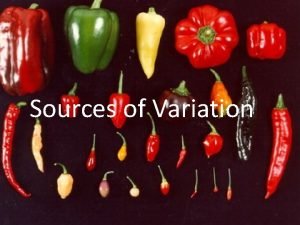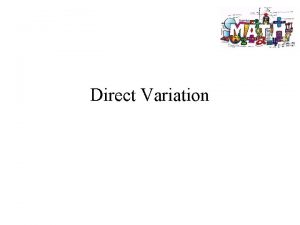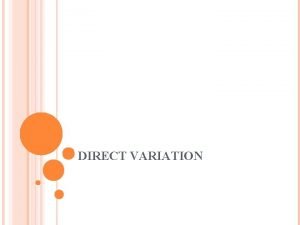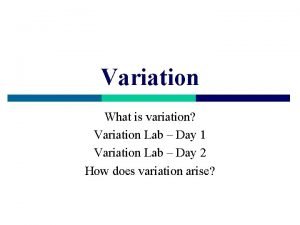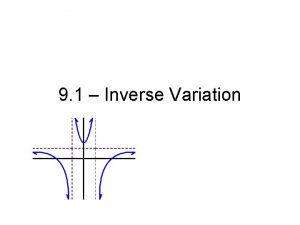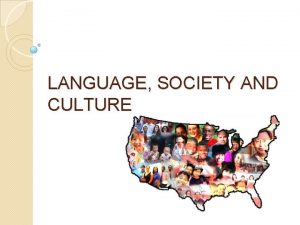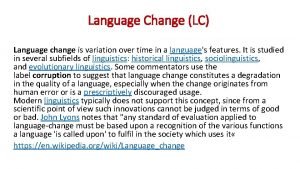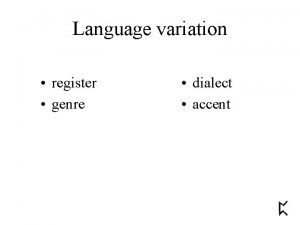LANGUAGE CULTURE SOCIETY Interpreting Language Variation and Change

















- Slides: 17

LANGUAGE CULTURE & SOCIETY Interpreting Language Variation and Change “Kevin Tuite” Presented by: Meritha Isnaeni Nurul Husnul Hotimah Syifah Fauziah

Kevin Jhon Tuite Born: 03 April 1954 South Bend, Indiana, USA Department d’antropologie

Interpreting Language Variation and Change Historical linguistics is a historical discipline, and the writing up of hypotheses about past states of languages in the form of etymologies and diachronic grammars is type of historiography (Lass 1997: 17). The focus of this chapter will be on etymology, as history and as historiography. In this chapter, Kevin Tuite use intentionally employing the word ”history-ography” in its older sense.

The chapter begins with a brief history of etymology, followed by a case study of an etymology crux which drew the attention of a number of a leading specialists in Romance linguistics. Remarks on variations sociolinguistics, a field of enquiry which is in many ways the offspring of nineteenth-century historical linguistics, and which is presently confronting similar issues in the modeling and interpretation of language change.

Etymology and Comparative Grammar Etymology is the study of word origins, which has been practiced, after a fashion, since at least Plato’s time. As now practiced, etymology is the reconstruction of the history (and prehistory) of words and word elements. Comparative grammar is the analysis and comparison of the grammatical structures or related languages or dialects.

The Neo-grammarians and Doctrine of the “Exceptionless Sound Law” The first generations of linguists to work on Indo. European were aware that even the most regular of sound correspondences had exceptions. Some such exceptions were attributed to the borrowing of words from other languages, especially those used in writing, administration or commerce. The “Neo-grammarians” (Junggrammatiker), as they came to be called, distinguished two fundamentally distinct classes of phenomena which modified the sound-shape of words.

Etymology “trouver” In keeping with Neo-grammarian doctrine, Paris believed it a methodologically sound principle to assume regularity of sound change unless there were compelling reasons to think otherwise. If one were to take trouver and trobar as the starting-point and work backwards in accordance with established sound laws, one arrives at the proto-form *tropare. But could *tropare have existed in Vulgar Latin, and if so, how could it have evolved to mean “find”?

The classical Latin word tropus, borrowed from Greek, denoted a figure of rhetoric, but in later Latin it came to be used more commonly as a musical term, designating a melodic variation, and then music added to liturgical verses sung in plainchant. According to Paris, it was in the Gallo-Romance dialects that a presumed verb based on this root – *tropare, meaning “compose a melody” – would have gradually acquired a more general sense.

Etymologies, Fossils, and Narratives Etymological studies of even a single word may run to hundreds of pages, but some of the most brilliant are only a few paragraphs long. The study of fossils, as an example of an investigation undertaken according to the norms of the natural sciences, and the interpretation of a chronologically or culturally remote text, as an instance where the hermeneutic method is called for, that is, the application of interpretive techniques which attempt to bridge the gap between the reader’s cultural-linguistic-historical “horizon, ” and that surrounding the production of the text (cp. Gadamer 1982).

He argues that the study of fossils, like that of texts and other cultural artifacts, necessarily begins with their being situated in a web of meaning, in the sense that a fossil – as fossil (and not as a simple lump of rock) – is constituted as an object of inquiry through its placement in relation to other fossils. Politically motivated amateur etymologies are depressingly common – especially on the Internet – but well-trained professional linguists have by no means been exempt from bias in the reconstruction of word histories, especially when political circumstances encouraged them to do so.

The methodological issues singled out by Wylie (1985: 483), in the passage cited at the beginning of this chapter, provide a useful starting point for a summarizing of the degree of consensus among etymologists, and historical linguists in general, concerning the formation and constraining of hypotheses. I will add two further issues relating to historical methodology to Wylie’s list: • What it is that makes an account explanatory, and what evidence hypothesis. constitutes grounds for accepting an

• The limits of empirical knowledge, and the status of theoretical claims about unobservable phenomena. • The enforcing of high standards of erudition and familiarity with neighboring disciplines considered relevant for etymological inquiry: history, archaeology, ethnology, sociology, etc. • The agonistic style of scholarly exchange favored by etymologists for almost two centuries.

Research on variation and change since Saussure The young Saussure trained at Leipzig under the leading linguists of the Neo-grammarian movement. Although Saussure was doing original linguistic research in his adolescence, it was at Leipzig that he learned of the “fait ´etonnant” of the sound law, as the core doctrine of the Neo-grammarian approach to the historical study of language (Saussure 1960). Labov insists that the minute observation of sound changes in progress has only confirmed the hypothesis of the Neogrammarians concerning the distinction between regular, gradual phonetic change and other types of change, which are less regular and frequently conditioned in complex ways (Labov 1981, 1994).

Labov’s Principles of linguistic change (1994, 2001), the discipline is confronting the same issues as its predecessors of a century ago: • Variation and change is a ubiquitous characteristic of language. Change inheres in its triple nature as system, activity and social institution (L¨udtke 1986, Keller 1994, Tuite 1999). • Physiological and cognitive factors act as constraints upon certain types of change. Consonant lenitions are far more frequent than fortitions (Trask 1996: 55– 60). Shifts in vowel features, such as height and anteriority, tend to follow predictable trajectories, as argued by Martinet

• Although the constraints in (2) assure a degree of regularity, even predictability, of linguistic change, the phenomenon is nonetheless fundamentally social in nature. Change is enacted and diffused in the intersubjective context of communication. Language use has an inherent indexical component, in that it continually signals, constructs, maintains and problematizes the multifaceted cluster of representations subsumed under the notion of “identity” (Silverstein 1996, 1998). • For the above desubjectivized reason, models among of others, variation and natural-science-like, change must be complemented by hermeneutic approaches, which draw upon knowledge of various elements of the context of the phenomenon under study, as well as the investigators’ own instincts and imaginative capabilities as socially, historically, and culturally

Some researchers have emphasized the role of universal or near-universal constraints on the direction of sound change. Gordon and Heath (1998) point to the evidence, from a large number of studies, that women generally lead men in changes marked by the raising and fronting of vowels, whereas men tend to lead in the lowering and backing of vowels, and also favor uvular and pharyngealized consonants.

Conclusion Etymology is a history and as historiography. Between history/reconstruction history and historiography are not so readily separable that make language have a variation and change from period to period.
 What is language variations
What is language variations Direct variation equation
Direct variation equation Direct and inverse variation
Direct and inverse variation Coefficient of determination formula in regression
Coefficient of determination formula in regression Vce chinese language culture and society
Vce chinese language culture and society 5-3 interpreting rate of change and slope
5-3 interpreting rate of change and slope Society and culture hsc
Society and culture hsc Hsc society and culture
Hsc society and culture Conclusion for project
Conclusion for project Culture and society are intricately related
Culture and society are intricately related Viking society and culture
Viking society and culture Society and culture in provincial america
Society and culture in provincial america Chapter 3 society and culture in provincial america
Chapter 3 society and culture in provincial america Example of society
Example of society Language
Language West african society and culture section 3
West african society and culture section 3 Cultural relativism
Cultural relativism Continuous culture and batch culture
Continuous culture and batch culture




